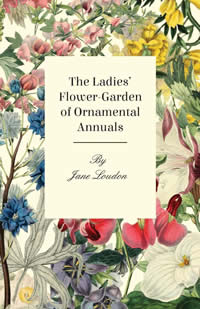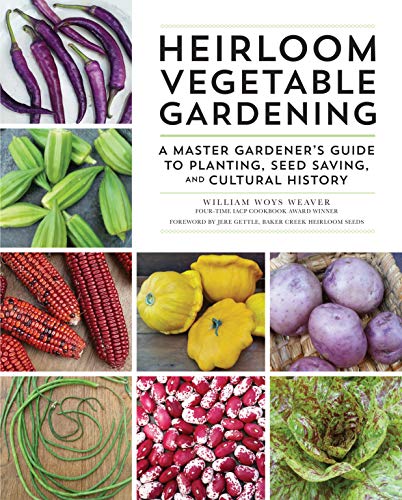![[An Orchard Odyssey] cover](https://depts.washington.edu/hortlib/graphix/orchardodyssey.jpg)
Editor’s note: This book was purchased with a grant from The Washington State Nursery & Landscape Association, which offers a certification program for horticulturists. These experts help clients to solve garden challenges successfully with experience, education, and knowledge of horticulture.
Orchards create special dimensions to a sense of place. Growing fruit trees and nut trees is both art and science, and heightens our contact with and appreciation of the interrelated ways of nature. An Orchard Odyssey: Find and Grow Tree Fruit in Your Garden, Community and Beyond by Naomi Slade of the United Kingdom provides insights into not only the reasons for orchard-growing but also the methods. The book highlights the benefits for people and the environment, as well as the local economy and community. It is inspiring to both plant and food enthusiasts.
I was fortunate to grow up on an old orchard homestead in upstate New York, and I have vivid memories of picking Northern Spy apples and packing them into rugged burlap bags in the chilly late fall weather. Climbing the trees to reach the highest branches was an exercise in possibility, capability, vulnerability, and achievement. Warm apple pies and hot mulled cider comforted us all winter long – the ultimate reward. So the odyssey is familiar.
Naomi Slade divides An Orchard Odyssey into two parts. The first part is called The Orchard in the Landscape. Chapter one covers orchard history, From Wilderness to Cultivation. Chapter two, An Orchard Tapestry, describes traditional and chance approaches to design. The Conservation and Biodiversity chapter details an ecological community. The Orchards in the Community chapter is made up of growing, sharing, and foraging, discussing the environment, the local economy, and fruit heritage in the neighborhood.
The second part is called An Orchard of Your Own. It includes the following chapters: Creative Orchard Design; Fruit Trees for Every Space; Tree Planting and Care; and Enjoying the Harvest, with a recipe for Rumtopf, a traditional German delight consisting of fruit preserved with rum and sugar to serve during the winter holidays.
There are many ways to gain hands-on experience with orchards. The Western Cascade Fruit Society and affiliated chapters throughout Western Washington have as their objective “to bring together new and experienced fruit growers who will promote the science, cultivation and pleasure of growing fruit-bearing trees, vines, and plants in the home landscape.” The mission of City Fruit in Seattle is to “promote the cultivation of urban fruit in order to nourish people, build community and protect the climate.” The Community Orchard of West Seattle partners with Nature Stewards and provides a home-scale model for an organic urban orchard. Produce goes to volunteers as well as the South Seattle College Food Pantry. Another example is Piper’s Orchard within Carkeek Park, which was restored in 1983 as a community project. Washington State University offers diagnostic resources for fruit tree pests and diseases through their Hortsense website and Master Gardener outreach in every county. The Western Washington Fruit Research Foundation offers a list of recommended varieties for the region. Washington State is, of course, a leader in orchard production.
By planning, planting, and preserving orchards, a community invests in the future to counter environmental threats. The process provides environmental benefits and economic potential, cultivates continuing education in life science, expands knowledge of one’s neighborhood, fosters aesthetic value, encourages community and puts food on the table. What could be a better way to spend time?
Published in the September 2018 Leaflet for Scholars, Volume 5, Issue 9.
 Frances Perry (1907-1993) perceived a lack of gardening information for women in the mid-20th century. As a horticultural lecturer, horticultural advisor (to her county council), and gardening correspondent in England, she noted an ongoing demographic change: more and more women were attending her presentations or writing her letters. Her colleagues, both men and women, had also observed this change.
Frances Perry (1907-1993) perceived a lack of gardening information for women in the mid-20th century. As a horticultural lecturer, horticultural advisor (to her county council), and gardening correspondent in England, she noted an ongoing demographic change: more and more women were attending her presentations or writing her letters. Her colleagues, both men and women, had also observed this change. Jane Webb Loudon’s most significant work was “The Ladies’ Flower-Garden,” a multi-volume set with each volume focused on a particular type of plants. The Miller Library has the first volume in this series devoted to annuals. While this book is in the Library’s Rare Book Room and only available to view by appointment, many of the illustrations appear in “
Jane Webb Loudon’s most significant work was “The Ladies’ Flower-Garden,” a multi-volume set with each volume focused on a particular type of plants. The Miller Library has the first volume in this series devoted to annuals. While this book is in the Library’s Rare Book Room and only available to view by appointment, many of the illustrations appear in “ The book “Heirloom Vegetable Gardening” was a classic almost from the moment it was first published in 1997. The author, William Woys Weaver, is a rare scholar of the kitchen garden with a PhD in food ethnography, or the study of cultural eating habits.
The book “Heirloom Vegetable Gardening” was a classic almost from the moment it was first published in 1997. The author, William Woys Weaver, is a rare scholar of the kitchen garden with a PhD in food ethnography, or the study of cultural eating habits.![[A People's Curriculum for the Earth] cover](https://depts.washington.edu/hortlib/graphix/people'scurriculumfortheearth.jpg)
 Marietta and Ernie O’Byrne are very clear about their gardening goals. They are not interested in low-maintenance gardening “with orderly shrubs, surrounded by chipped mulch, and plants that don’t touch,” but neither do they care for plant thugs that dominate their neighbors. To achieve these ends, much maintenance is required and they relish this work. “A Tapestry Garden: The Art of Weaving Plants and Place” captures these ideals as they have been expressed in their two acres of gardens on a farm in Eugene.
Marietta and Ernie O’Byrne are very clear about their gardening goals. They are not interested in low-maintenance gardening “with orderly shrubs, surrounded by chipped mulch, and plants that don’t touch,” but neither do they care for plant thugs that dominate their neighbors. To achieve these ends, much maintenance is required and they relish this work. “A Tapestry Garden: The Art of Weaving Plants and Place” captures these ideals as they have been expressed in their two acres of gardens on a farm in Eugene. Holden Village is a Lutheran community center deep in the Cascade Mountains, accessible only by a boat ride on Lake Chelan followed by a bus ride on a mountain road. At 3,000 feet, it is very cold and snowy in the winter, and cut off from Wi-Fi and cell phone reception.
Holden Village is a Lutheran community center deep in the Cascade Mountains, accessible only by a boat ride on Lake Chelan followed by a bus ride on a mountain road. At 3,000 feet, it is very cold and snowy in the winter, and cut off from Wi-Fi and cell phone reception. In “Visionary Landscapes,” Kendall Brown profiles the lives and gardens of five designers born in the mid-20th century – three in Japan, two in the United States – who have practiced their craft primarily in North America. The new gardens they have designed, mostly in the last 30 years, are pushing the evolving concept of Japanese-style gardening.
In “Visionary Landscapes,” Kendall Brown profiles the lives and gardens of five designers born in the mid-20th century – three in Japan, two in the United States – who have practiced their craft primarily in North America. The new gardens they have designed, mostly in the last 30 years, are pushing the evolving concept of Japanese-style gardening.![[The Japanese Garden] cover](https://depts.washington.edu/hortlib/graphix/JapanesegardenWalker.jpg)
![[An Orchard Odyssey] cover](https://depts.washington.edu/hortlib/graphix/orchardodyssey.jpg)